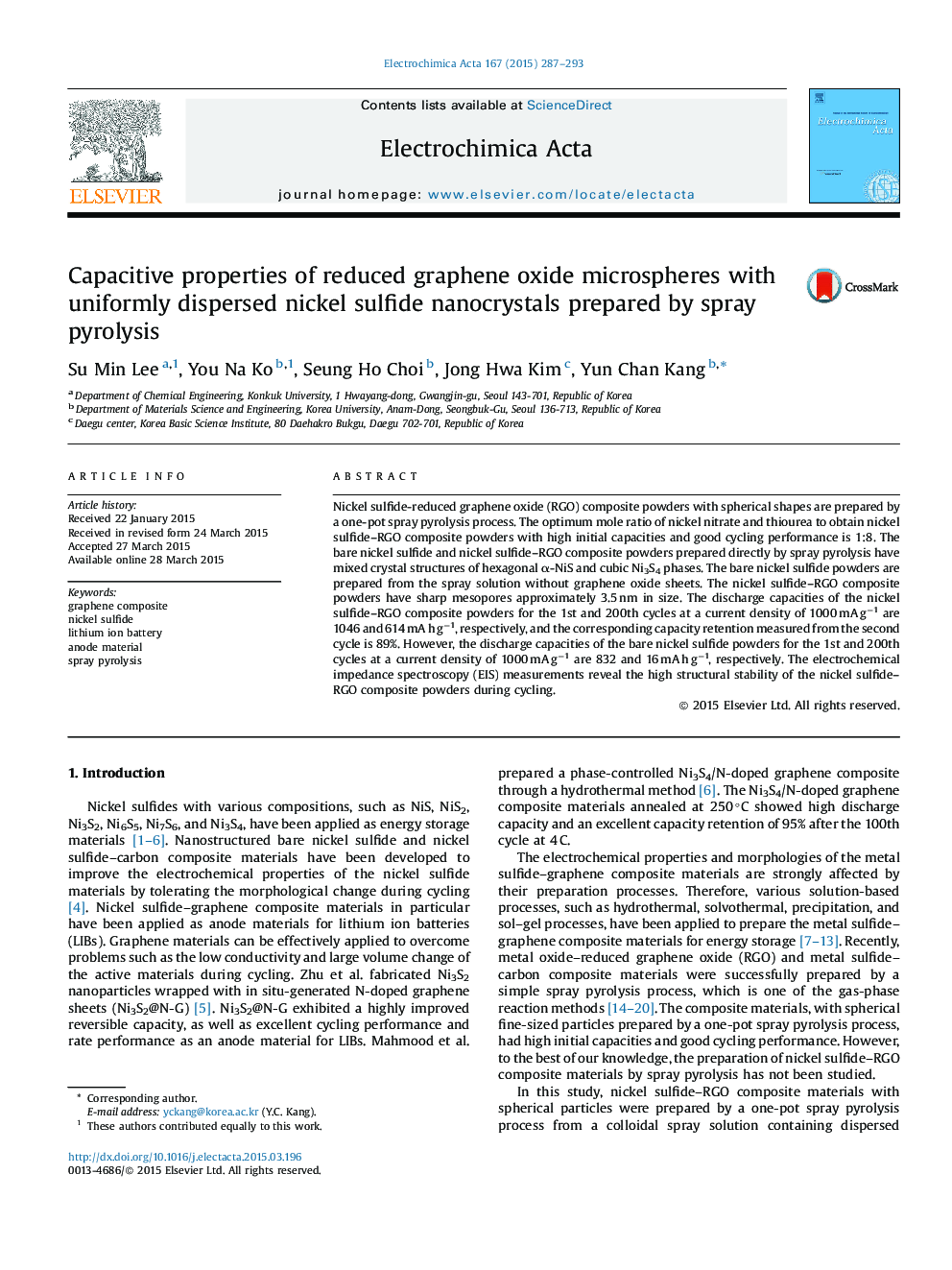| Article ID | Journal | Published Year | Pages | File Type |
|---|---|---|---|---|
| 184354 | Electrochimica Acta | 2015 | 7 Pages |
•Nickel sulfide-reduced graphene oxide composite powders are prepared by a one-pot spray pyrolysis process.•Optimum mole ratio of nickel nitrate and thiourea to obtain nickel sulfide–reduced graphene oxide composite is 1:8.•Discharge capacity of the nickel sulfide–RGO composite for the 200th cycle at a current density of 1 A g−1 is 614 mA h g−1.
Nickel sulfide-reduced graphene oxide (RGO) composite powders with spherical shapes are prepared by a one-pot spray pyrolysis process. The optimum mole ratio of nickel nitrate and thiourea to obtain nickel sulfide–RGO composite powders with high initial capacities and good cycling performance is 1:8. The bare nickel sulfide and nickel sulfide–RGO composite powders prepared directly by spray pyrolysis have mixed crystal structures of hexagonal α-NiS and cubic Ni3S4 phases. The bare nickel sulfide powders are prepared from the spray solution without graphene oxide sheets. The nickel sulfide–RGO composite powders have sharp mesopores approximately 3.5 nm in size. The discharge capacities of the nickel sulfide–RGO composite powders for the 1st and 200th cycles at a current density of 1000 mA g−1 are 1046 and 614 mA h g−1, respectively, and the corresponding capacity retention measured from the second cycle is 89%. However, the discharge capacities of the bare nickel sulfide powders for the 1st and 200th cycles at a current density of 1000 mA g−1 are 832 and 16 mA h g−1, respectively. The electrochemical impedance spectroscopy (EIS) measurements reveal the high structural stability of the nickel sulfide–RGO composite powders during cycling.
Graphical abstractFigure optionsDownload full-size imageDownload as PowerPoint slide
